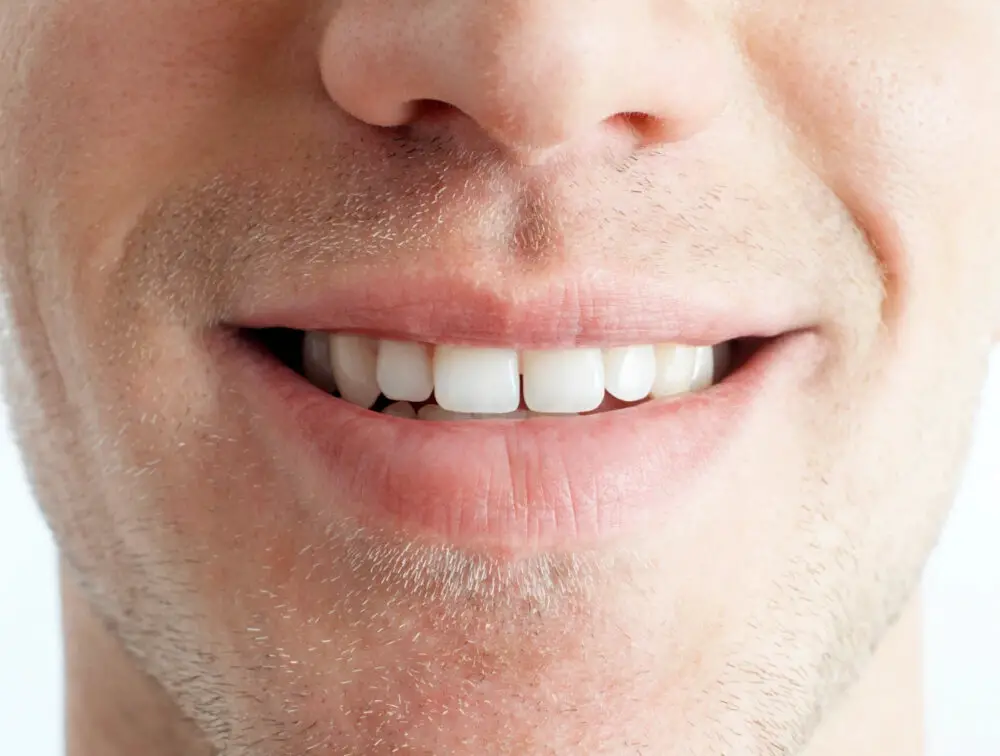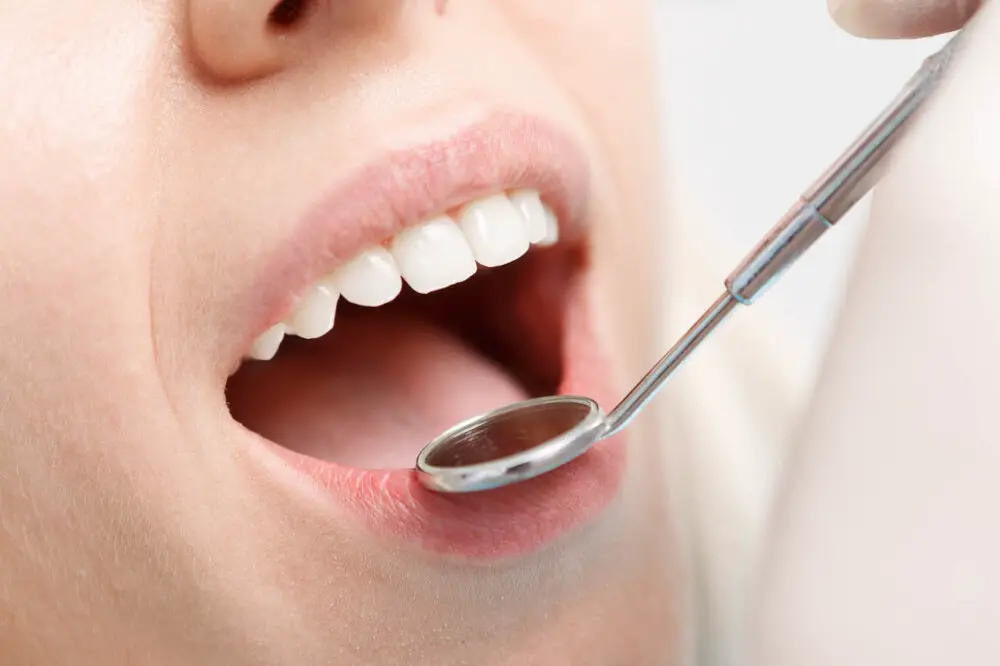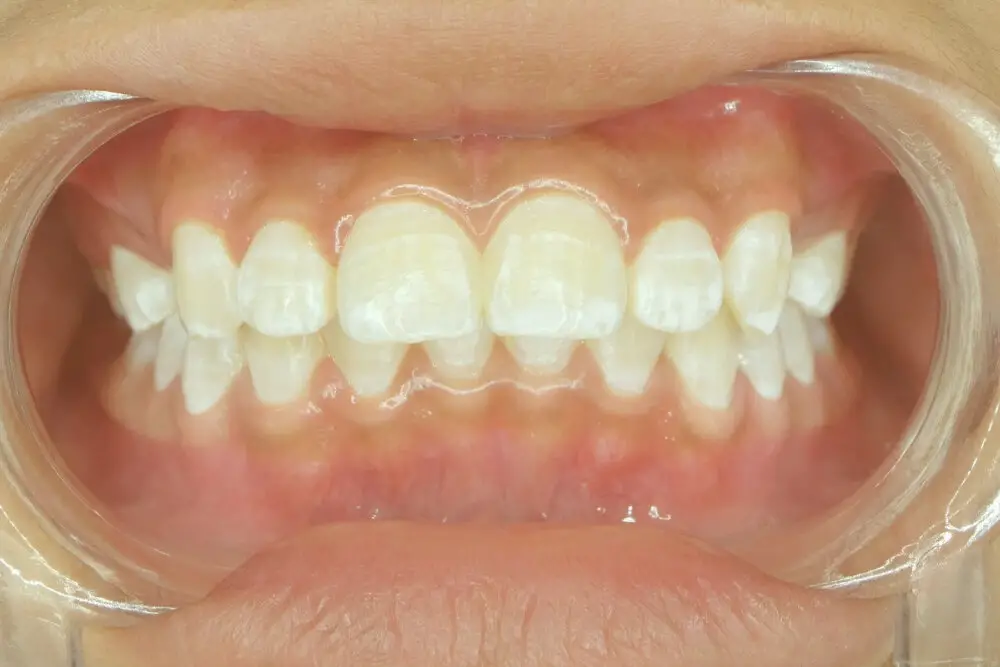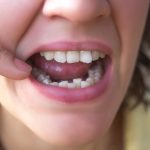Why Do I Bleed When I Brush My Teeth? Understanding and Preventing Gum Disease

When you brush your teeth, you may have noticed that sometimes you spit out red saliva. This could be an alarming sight for many people, but it’s actually a common sign of gum disease. Gum disease, also known as periodontal disease, is caused by the buildup of bacteria in the mouth, which leads to inflammation and infection in the gums. If left untreated, it can lead to tooth loss and other serious health problems. Understanding the causes and symptoms of gum disease is crucial for maintaining good oral health and preventing serious dental issues. Gum disease is a prevalent condition that affects millions of people worldwide. It’s caused by the accumulation of plaque, a sticky film of bacteria that forms on the teeth and gums. Plaque can harden into tartar, which can only be removed by a professional dental cleaning. When plaque and tartar build up on the teeth and gums, they can cause inflammation and irritation, which can eventually lead to bleeding gums. Other symptoms of gum disease include bad breath, loose teeth, and receding gums. By understanding the causes and symptoms of gum disease, you can take steps to prevent and treat this common dental issue.
Gum disease, also known as periodontal disease, is a bacterial infection that affects the tissues and bones that support teeth. It is caused by the buildup of plaque, a sticky film of bacteria that forms on teeth and gums. If left untreated, gum disease can lead to tooth loss and other serious health problems. The early stage of gum disease is called gingivitis, which is characterized by red, swollen, and bleeding gums. As the disease progresses, it can cause pockets to form between the teeth and gums, where more bacteria can accumulate and cause further damage. Regular dental checkups and good oral hygiene practices can help prevent and treat gum disease.
Gum disease is a prevalent condition that affects millions of people worldwide. According to recent studies, around 47.2% of adults aged 30 years and older in the United States have some form of gum disease. The prevalence of this condition is even higher among older adults, with 70.1% of those aged 65 years and older experiencing gum disease. Gum disease is caused by the buildup of plaque and bacteria on the teeth and gums, leading to inflammation and bleeding. This condition can have serious consequences if left untreated, including tooth loss and an increased risk of heart disease and stroke. However, with proper oral hygiene and regular dental checkups, gum disease can be prevented and treated effectively.
Gum disease is a common dental problem that causes inflammation and bleeding of the gums. The main cause of gum disease is the buildup of plaque on teeth, which is a sticky film of bacteria that forms on teeth and gums. Plaque can cause irritation and inflammation of the gums, leading to bleeding, swelling, and even tooth loss. Other factors that contribute to gum disease include poor oral hygiene, smoking, hormonal changes, genetics, and certain medical conditions like diabetes. Without proper care and treatment, gum disease can progress and cause serious damage to the teeth and gums, making it crucial to take preventative measures and seek professional help if symptoms persist.
Symptoms of Gum Disease

Gum disease, also known as periodontal disease, affects the tissues that hold your teeth in place. It is a common condition that affects millions of people worldwide, and if left untreated, it can lead to tooth loss. The symptoms of gum disease can vary depending on the severity of the condition. One of the most common symptoms is bleeding gums, especially when you brush your teeth. Other symptoms may include red, swollen, and tender gums, bad breath, loose teeth, and receding gums. If you experience any of these symptoms, it is important to see a dentist as soon as possible. Gum disease is caused by the buildup of plaque on your teeth, which can lead to inflammation and infection of the gums. This can happen if you don’t brush and floss regularly, or if you have a diet high in sugar and carbohydrates. Smoking and certain medications can also increase your risk of developing gum disease. If you notice any symptoms of gum disease, it is important to take action immediately. Your dentist can help you develop a treatment plan to prevent further damage to your teeth and gums and keep your smile healthy and bright.
Bleeding gums can be a sign of gum disease, which occurs when bacteria and plaque build up on teeth and gums. This can cause inflammation and damage to the tissues that support teeth, leading to bleeding, swelling, and tenderness in the gums. Other factors that can contribute to bleeding gums include poor oral hygiene, smoking, hormonal changes, and certain medications. It is important to address bleeding gums promptly, as untreated gum disease can lead to tooth loss and other health problems. Maintaining good oral hygiene, including regular brushing and flossing, along with regular dental checkups and cleanings, can help prevent and treat bleeding gums.
Bad breath, also known as halitosis, is a common symptom of gum disease. The condition can be caused by the buildup of bacteria in the mouth, which produces a foul odor. In addition to gum disease, bad breath can also be caused by poor oral hygiene, certain foods and drinks, smoking, and medical conditions such as dry mouth. If left untreated, bad breath can have a negative impact on one’s social life and self-esteem. Fortunately, there are several ways to prevent and treat bad breath, including regular brushing and flossing, using mouthwash, drinking plenty of water, and avoiding foods and drinks that can cause bad breath.
Red, swollen, and tender gums are one of the initial signs of gum disease, a common condition that affects the tissues and bones that surround and support the teeth. Gum disease is often caused by poor oral hygiene, leading to the accumulation of plaque, a sticky film of bacteria that forms on the teeth. If left untreated, gum disease can progress and cause more severe symptoms, including bleeding gums, bad breath, receding gums, loose teeth, and even tooth loss. To prevent gum disease, it’s essential to brush and floss regularly, eat a balanced diet, avoid smoking, and visit a dentist for regular checkups and cleanings.
One of the most common symptoms of gum disease is painful chewing. When the gums are infected, they become swollen, tender, and bleed easily. This can make it difficult and uncomfortable to eat certain foods, especially those that are harder or require more chewing. In addition to pain, other symptoms of gum disease include bad breath, receding gums, and loose teeth. If left untreated, gum disease can lead to tooth loss and even affect your overall health. To prevent gum disease, it’s important to practice good oral hygiene, including brushing and flossing regularly and visiting your dentist for routine cleanings and check-ups.
Loose teeth can be a sign of gum disease, also known as periodontal disease, which is a serious condition that affects the soft tissue and bones that support teeth. When gum disease is left untreated, it can cause the gums to pull away from the teeth, creating pockets that can harbor bacteria and lead to infection. This infection can damage the bones and tissue that hold teeth in place, causing them to become loose and even fall out. It is important to practice good oral hygiene, including brushing and flossing regularly, to prevent gum disease and keep your teeth healthy and strong. In addition, regular dental check-ups and cleanings can help detect and treat early signs of gum disease before it progresses to more serious stages.
Understanding Gum Disease

Gum disease, also known as periodontal disease, is a common condition that affects the gums and bones that support the teeth. It is caused by a buildup of plaque on the teeth, which can lead to inflammation and infection of the gums. Gum disease can range from mild gingivitis, which causes redness and swelling of the gums, to more severe periodontitis, which can lead to tooth loss and other serious health problems. Symptoms of gum disease include bleeding gums, bad breath, loose teeth, and changes in the way your teeth fit together when you bite. If left untreated, gum disease can also increase your risk of heart disease, stroke, and other health problems. Preventing gum disease starts with good oral hygiene. Brush your teeth twice a day, floss daily, and use an antiseptic mouthwash to kill bacteria in your mouth. You should also visit your dentist regularly for checkups and cleanings. If you have gum disease, your dentist may recommend treatment options such as scaling and root planing, which involves removing plaque and tartar from the teeth and roots, or surgery to repair damaged gum tissue. By taking care of your teeth and gums, you can prevent gum disease and maintain good oral health for life.
Gum disease is a common oral health problem caused by bacterial infections that affect the tissues surrounding and supporting the teeth. There are two main types of gum disease – gingivitis and periodontitis. Gingivitis is the milder form of gum disease and is characterized by red, swollen, and bleeding gums. It is caused by a buildup of plaque and can be reversed with proper oral hygiene and regular dental checkups. Periodontitis, on the other hand, is a more severe form of gum disease that can cause irreversible damage to the gums and bone that support the teeth. It can lead to loose, shifting, or even lost teeth. Preventive measures such as brushing twice a day, flossing daily, and visiting the dentist regularly can help prevent and manage gum disease.
Gum disease, also known as periodontal disease, is a progressive condition that affects the tissues surrounding and supporting the teeth. There are three stages of gum disease: gingivitis, periodontitis, and advanced periodontitis. Gingivitis is the mildest form, characterized by red, swollen, and bleeding gums. If left untreated, it can progress to periodontitis, where the gums pull away from the teeth, forming pockets that become infected. The final stage, advanced periodontitis, is characterized by severe damage to the bone and connective tissue that support the teeth, which can eventually lead to tooth loss. Regular dental check-ups, proper oral hygiene, and a balanced diet can help prevent and manage gum disease.
Gum disease, also known as periodontal disease, is a bacterial infection that affects the gum tissues and the bone that supports the teeth. The disease begins with the formation of plaque, a sticky film of bacteria that accumulates on the teeth and gums. If the plaque is not removed through regular brushing and flossing, it can harden into tartar, which can only be removed by a dentist or hygienist. As the bacteria in plaque and tartar multiply, they produce toxins that irritate the gums, leading to inflammation and bleeding. Over time, the inflammation can cause the gums to recede and the bones that support the teeth to deteriorate, eventually leading to tooth loss. Therefore, it is essential to maintain good oral hygiene practices and visit a dentist regularly to prevent gum disease from progressing.
Prevention of Gum Disease

Gum disease is a common problem that affects many people worldwide. It can cause bleeding, inflammation, and even tooth loss if left untreated. However, preventing gum disease is relatively simple, and there are many steps individuals can take to maintain healthy gums. One of the most effective ways to prevent gum disease is to brush and floss regularly. This helps to remove plaque and bacteria from teeth and gums, preventing the development of gingivitis, the earliest stage of gum disease. Another crucial factor in preventing gum disease is maintaining a healthy diet. Foods that are high in sugar and carbohydrates can increase the risk of gum disease by providing an ideal environment for bacteria to grow. On the other hand, a diet rich in fruits, vegetables, and lean protein can help to strengthen the immune system and promote healthy gums. Additionally, avoiding smoking and other tobacco products can significantly reduce the risk of gum disease. Smokers are more likely to develop gum disease than non-smokers, and the habit can also impair healing and recovery after gum disease treatment. By taking these simple steps, individuals can maintain healthy gums and prevent the development of gum disease.
Brushing and flossing are essential techniques for maintaining good oral hygiene. When brushing, it is important to use a soft-bristled toothbrush and brush in a circular motion to remove plaque and food particles from all surfaces of the teeth. Be gentle, but thorough, and don’t forget to brush the tongue and roof of the mouth to remove bacteria that can cause bad breath. Flossing is equally important as it reaches areas that a toothbrush can’t, such as between the teeth and under the gumline. When flossing, slide the floss gently between the teeth and curve it around each tooth, making sure to go below the gumline. By practicing these techniques daily, you can prevent gum disease and keep your teeth and gums healthy.
Regular dental checkups and cleanings are essential to maintaining good oral health. Not only do they help prevent gum disease, but they also help detect any potential problems early on, such as cavities or oral cancer. During a cleaning, a dental professional will remove any plaque or tartar buildup that may have accumulated on your teeth and gums, which can lead to gum disease if left untreated. Additionally, they will check for any signs of inflammation or bleeding, which can indicate the presence of gum disease. By scheduling regular dental checkups and cleanings, you can stay on top of your oral health and prevent more serious issues down the line.
Maintaining a healthy diet and lifestyle habits is essential for preventing gum disease and keeping your teeth healthy. Consuming a balanced diet that includes fruits, vegetables, lean proteins, and whole grains can provide the necessary nutrients for strong teeth and gums. Avoiding sugary and acidic foods and drinks, such as soda and candy, can also help prevent tooth decay and gum disease. Additionally, practicing good oral hygiene habits, such as brushing twice a day and flossing daily, can remove plaque and prevent the buildup of harmful bacteria in the mouth. Regular visits to the dentist for cleanings and check-ups can also help detect and prevent gum disease early on. Overall, maintaining a healthy lifestyle can not only benefit your oral health but also your overall well-being.
In addition to brushing and flossing, using mouthwash and other dental products can play a crucial role in preventing and treating gum disease. Mouthwash helps to kill bacteria and freshen breath, while fluoride toothpaste strengthens tooth enamel and prevents cavities. Other dental products, such as interdental brushes and water flossers, can also be effective in removing plaque and debris from hard-to-reach areas between teeth. However, it’s important to use these products correctly and in conjunction with proper brushing and flossing techniques. Consulting with a dentist or dental hygienist can help individuals determine which products are best suited to their specific dental needs.
Treatment of Gum Disease

Gum disease, also known as periodontal disease, is a serious dental concern that can cause bleeding gums, bad breath, and tooth loss if left untreated. There are several treatment options available for gum disease, depending on the severity of the condition. The first step in treating gum disease is to schedule a visit with your dentist. Your dentist will examine your teeth and gums, and may recommend a deep cleaning procedure to remove plaque and tartar buildup from your teeth and gums. This procedure, known as scaling and root planing, is typically done under local anesthesia and can take several appointments to complete. In addition to scaling and root planing, your dentist may also recommend antibiotics to help control the infection and reduce inflammation. These antibiotics can be taken orally or applied directly to the infected area. In severe cases, surgery may be necessary to remove damaged tissue and restore the health of your gums. It is important to follow your dentist’s instructions carefully and maintain good oral hygiene habits at home to prevent further damage to your gums. With proper treatment and care, gum disease can be effectively managed and prevented from causing more serious dental problems.
Scaling and root planing is a non-surgical treatment for gum disease that involves removing plaque and tartar from the teeth and smoothing out any rough spots on the tooth root to prevent further buildup. This procedure is typically performed by a dental hygienist and may require local anesthesia to ensure patient comfort. Scaling and root planing is an effective way to halt the progression of gum disease and prevent further damage to the teeth and gums. Patients who undergo this procedure may experience some discomfort and bleeding in the days following the treatment, but this is a normal part of the healing process and should subside within a week or two.
Antibiotics are medications that are commonly used to treat bacterial infections. They work by killing or slowing the growth of bacteria in the body. Antibiotics can be taken orally, through injections, or applied topically. In the case of gum disease, antibiotics may be prescribed to help manage the infection and prevent it from spreading. However, it is important to note that antibiotics should only be taken as prescribed by a healthcare professional and should not be used to treat viral infections or illnesses. Overuse or misuse of antibiotics can lead to antibiotic resistance, which can make it harder to treat bacterial infections in the future.
Surgery is a common treatment for advanced gum disease, also known as periodontitis. This type of surgery involves removing tartar deposits, bacteria, and damaged tissue from the affected areas around your teeth. It may also involve reshaping the bone and gum tissue to promote healing and prevent further damage. Depending on the severity of your condition, different types of surgery may be recommended, such as flap surgery or bone or tissue grafts. While surgery can be effective in treating advanced gum disease, it is important to practice good oral hygiene and visit your dentist regularly to prevent gum disease from progressing to this stage.
In addition to proper oral hygiene practices, there are several other treatments available to prevent and treat gum disease. These include professional dental cleanings, scaling and root planing, antibiotics, and surgery in severe cases. Professional dental cleanings are essential to remove any plaque and tartar buildup that cannot be removed through regular brushing and flossing. Scaling and root planing involves deep cleaning below the gumline to remove bacteria and smooth out rough areas on the tooth root. Antibiotics may be prescribed to kill any remaining bacteria, and surgery may be necessary to repair any damage or reduce pockets around the teeth. It is important to consult with a dentist to determine the best course of treatment for individual cases of gum disease.
Gum disease is a common dental problem that affects millions of people worldwide. It is caused by the buildup of plaque, which can lead to inflammation and infection of the gums. If left untreated, gum disease can cause tooth loss, bone damage, and other serious health problems. Therefore, it is essential to prevent gum disease by practicing good oral hygiene, such as brushing and flossing daily, visiting the dentist regularly, and avoiding smoking and other harmful habits. By taking care of your oral health, you can prevent gum disease and maintain a healthy smile for years to come.
Gum disease, also known as periodontal disease, is caused by the buildup of plaque on the teeth and gums. This plaque contains bacteria that can lead to inflammation and infection of the gums, which can cause bleeding, swelling, and tenderness. In its early stages, gum disease is known as gingivitis and can be reversed with good oral hygiene habits. However, if left untreated, it can progress to periodontitis, which can cause the gums to pull away from the teeth and create pockets that can become infected. Periodontitis can lead to tooth loss and even bone damage if left untreated. Therefore, it is important to practice good oral hygiene, including brushing and flossing regularly, and to visit the dentist regularly to prevent gum disease from developing or progressing.
It is crucial to seek professional dental care if you experience bleeding while brushing your teeth. Ignoring this issue could lead to more severe gum disease, which can damage your teeth and gums permanently. Dental professionals can assess your condition, provide a proper diagnosis, and recommend the best course of treatment. They can also offer insights on how to maintain good oral hygiene practices at home, such as flossing, brushing, and using mouthwash. Seeking professional dental care not only helps prevent gum disease but also ensures the overall health of your teeth and gums. Therefore, it is highly encouraged to schedule regular check-ups with your dentist to maintain good oral health and prevent further complications.
Conclusion

In conclusion, bleeding when brushing your teeth is not always a cause for alarm, but it can be a sign of gum disease, which should not be ignored. Understanding the causes and risk factors of gum disease, such as poor oral hygiene, smoking, and certain medical conditions, is crucial for preventing and treating this condition. Maintaining good oral hygiene habits, including regular brushing and flossing, visiting your dentist regularly, and avoiding harmful habits like smoking, can help prevent gum disease and keep your teeth and gums healthy. So, take care of your teeth and gums, and don’t hesitate to see a dentist if you experience any symptoms of gum disease, such as bleeding or swollen gums, bad breath, or tooth sensitivity. Remember, prevention is always better than cure when it comes to gum disease and maintaining good oral health.







